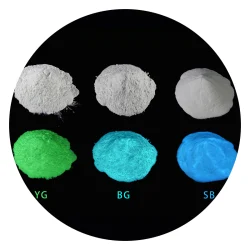Some common types of inorganic pigments
2023-11-28
Inorganic pigments are colorants that are derived from minerals, metals, or other inorganic compounds. These pigments are known for their stability, resistance to heat and light, and durability, making them suitable for a wide range of applications, including paints, coatings, plastics, ceramics, and construction materials. Here are some common types of inorganic pigments:
1. Titanium Dioxide (TiO2):
- Color: White
- Properties: Widely used as a white pigment due to its excellent opacity, brightness, and UV resistance. It is a key component in many paints, coatings, and plastics.
2. Iron Oxides:
- Colors: Red (Fe2O3), Yellow, Brown (Mix of Red and Yellow)
- Properties: Natural or synthetic pigments that provide a range of earthy colors. They are commonly used as tinting pigments in paints, coatings, and concrete.
3. Cadmium Pigments:
- Colors: Cadmium Red, Cadmium Orange, Cadmium Yellow
- Properties: Bright and opaque pigments with high tinting strength. However, they have environmental and health considerations due to the presence of cadmium.
4. Chromium Oxide Green (Cr2O3):
- Color: Green
- Properties: A durable green pigment used in a variety of applications, including paints, plastics, and ceramics. It is known for its heat stability and resistance to chemicals.
5. Ultramarine Blue:
- Color: Blue
- Properties: Originally derived from the semi-precious stone lapis lazuli, modern ultramarine blue is often synthetic. It is valued for its vivid blue color and is used in paints and plastics.
6. Manganese Violet (MnNH4PO4):
- Color: Violet
- Properties: An inorganic pigment that provides a violet color. It is used in various applications, including cosmetics and artist paints.
7. Prussian Blue (Fe7(CN)18):
- Color: Blue
- Properties: A synthetic blue pigment with good lightfastness. It has historical significance and is used in artist paints and coatings.
8. Chrome Yellow (Lead Chromate, PbCrO4):
- Color: Yellow
- Properties: A bright yellow pigment, but its use has decreased due to environmental and health concerns associated with lead. Substitute pigments are often used instead.
9. Zinc White (Zinc Oxide, ZnO):
- Color: White
- Properties: A white pigment with good brightness and UV-reflective properties. It is used in paints, coatings, and rubber products.
10. Bismuth Vanadate:
- Colors: Yellow, Orange
- Properties: Known for its high opacity, brightness, and durability. It is used in coatings, plastics, and other applications.
11. Barium Sulfate (Blanc Fixe):
- Color: White
- Properties: A white pigment with high density and chemical inertness. It is often used in coatings, plastics, and as a filler in various materials.
12. Rutile (TiO2):
- Color: White
- Properties: A crystalline form of titanium dioxide, known for its high refractive index. It is used in paints and coatings to enhance opacity and brightness.
Inorganic pigments are valued for their stability, lightfastness, and heat resistance, making them suitable for applications where color retention and durability are crucial. However, some inorganic pigments, such as those containing heavy metals like cadmium or lead, may have environmental and health considerations, leading to the development and use of alternative pigments in certain applications. When selecting pigments, it's essential to consider the specific requirements of the intended application and any regulatory guidelines.



